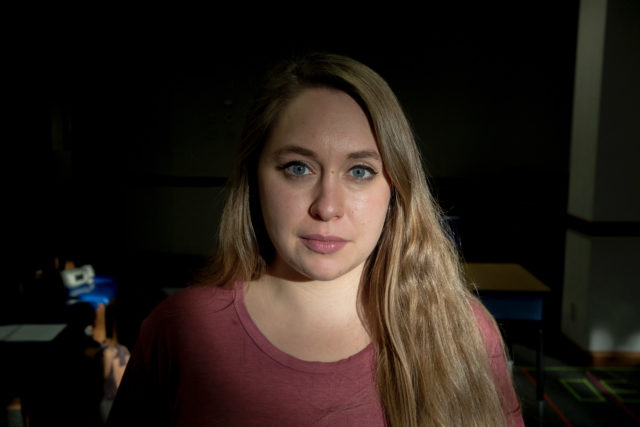
It has become increasingly obvious that we all, in one way or another, are shaped by a culture of rape. Last week, thousands of women and men across social media admitted not just that they had been affected, but how. One-by-one, the stories painted pictures of the perversity of the act; together, they exposed a more archetypal sort of narrative.
It is increasingly hard to ignore that our society of perpetrators, victims and bystanders rests on a social structure founded upon nonconsensual sex. For centuries it’s been hidden in a violence so intimate it has evaded direct and comprehensive scrutiny, but now in the personal we are finding the universal.
However, just a week after #metoo took over the internet, it has already been dubbed by many a movement bound to fail. Yes, it woke us up to a virulent truth bubbling up from the worst depths of humanity, but can a wave of narratives really make a difference? Does changing the predominant version of our culture’s history really matter?
Michael Yates Crowley’s new play, The Rape of the Sabine Women, by Grace B. Matthias, set to open on Oct. 27 in Boulder as produced by Local Theater Company, is an invocation and challenge to the cultural history of assault. The title itself is a namesake to no less than six paintings and sculptures now in the permanent collections of museums such as the Metropolitan Museum of Art and the Louvre. Portrayed in each of them is a different version of the rape of the Sabine women, also known as the founding of Rome.
The story takes place in a series of events that tell the founding of the great city. To ensure its future prosperity, Romulus invites the Sabines to a feast during which his army drives off the men and abducts and rapes the women. Soon they will marry them and father their children. Three years later, the Sabine men will attack Rome in revenge, but the women rally to stand in the way, holding off the violence to insist, instead, on peace. Or, at least, this is the version of events told by the historic canons of Western civilization.
But, says Local’s artistic director Pesha Rudnick, these paintings and sculptures are limited representations. First of all, they are made by men and carry the bias of that perspective. Secondly, they are restricted by their two- and three-dimensional forms. Frozen in both perspective and time, they amount to mere memorializations of one version of the story.
“[The story of the Sabine women] is constantly reinterpreted throughout history and, depending on the storyteller or the artist, you get a different bias,” Rudnick says. “In that this play is an act of recreating an art historical piece and story, there is something exciting about it; it brings all of us involved into the mindset of a renaissance, reinterpreting this canonical painting through a play, in a theater and a set.”
As a playwright, Crowley deals in a four-dimensional art form, one that requires both time and a multitude of voices to create. Yes, he is a man and in that way the script stems from male bias, but he too is a part of the renaissance Rudnick describes. He chose to tell the story of Grace because of his increasing awareness of the masculine complicity in rape culture, and he chose to confront it though his version of art, replete with vulnerability and comedy.
“Particularly as a man, I knew writing this play had to be more about listening and not about talking so much, which is weird for a playwright, right?” Crowley says. “If it is going well and I am doing my job, I’ve provided a crack into rape culture that will enable someone to talk about it with the understanding that rape exists, not as a lone incident, but as something that is sort of inbetween us all, a part of our social fabric, including mine.”
This animation is achieved through Crowley’s brilliant satire, which, at times, is so hilarious the audience is taken with disruptive bouts of laughter. The humor is effective because of its ability to confront the deviant aspects of our personal and social behaviors, holding our subconscious and conscious vices alike up to ridicule.

The play itself tells the story of Grace, a high school student, who, like many young women, enters into a budding romantic relationship with someone she really connects with, enough to take the timid but brave first steps into exploring physical and emotional intimacy. And then, in a foggy, drunken, confusing experience, she is raped and her confidence and innocence is ripped away from her.
The bulk of the play’s action focuses on what happens next, on the whirlwind of events that come to shape and even define the event after the fact, none of which have to do with Grace herself. Every other character in the play exhibits their take on the events, telling Grace how to act, how to feel and even that she’s a liar. These narratives are punctuated by The News, personified as a character on the stage, who hijacks the story until it is all but detached from the actual events.
In this way it weaves together the news of rape as if incorporating our current events (like what President Trump says he can do with a woman’s pussy or the unveiling of Harvey Weinstein’s endless path of assault) without having to name them specifically. Crowley knows he is telling a universal story and depends on that rather than statistics. This is not to avoid the painful fact that one out of every six women in America has been the victim of rape, but to lift such facts into broader and shared contemplation.
Silently at the center of it all sits Grace, searching for a way to make sense of the events, to make sense of her own experience and to find a way to ultimately move past them and into her own understanding of the world. She does not want to forget or abandon the rape, but she doesn’t want to dwell in the space of the crime either; she doesn’t want to succumb to being the victim others seem to want her to be.
Early in the play, Grace sits among the rows of high schoolers in a lesson about the play’s namesake painting. Distracted from its actual elements, she wonders instead about what happened next, from the women’s perspective. Looking for answers she cannot find in the classroom, she turns to Wikipedia, personified into a character in the play, and speaks directly to it.
GRACE: But what happened to the women?
WIKIPEDIA: They married the Romans.
GRACE: The ones who just… I don’t understand.
WIKIPEDIA: The Sabine women married the Roman men and had babies.
GRACE: The same men? How did it happen?
WIKIPEDIA: Article not found.
GRACE: When did they get married?
WIKIPEDIA: Article not found.
GRACE: Did all of them get married?
The conversation fades away because it has to, because the story we have been told about rape is still incomplete. Grace arrives at her moment of existential crisis on behalf of all of us as we struggle to deal with rape in a culture that so rarely examines the crime and consequences from the woman’s point of view.
“In this play you get to see Grace admitting that the absence of this information is making her feel really isolated, grasping to put together the pieces of the missing information, and embracing her quest to understand how she can continue to exist,” says Adeline Mann, the actor playing Grace.

“It’s a perfect example of what I love so much about theater and a testament to what the form is capable of. Unlike the paintings that play such a prominent role in this story, this play gives you more than just one moment; you get a string of them, you get to see relationships in motion and in movement. You get to see a character, a human being, take a journey, grow and discover a new way of being in the world.”
The play floats in the present moment, achieved by the sophisticated minimalism of the set, designed by Susan Crabtree and characteristic of Local productions.
It’s not much, just a few nods to the play’s high school setting, with props and pieces introduced sparsely, forsaking an aesthetic for poetic highlights instead. It’s a subtle complement to both the play’s humor and severity.
“This script itself is so strong that designing the set was all about getting out of its way,” Crabtree says. “In some plays, the sets need to be delivered with a heavy hand and in that case, I will design a set as if I was adding a character into the play. But with this play I quickly realized we were working with a piece of art bigger than me, or any one of us for that matter, and so my job was to subtract in order to support.”
There is humility in those words, “to subtract in order to support,” and in The Rape of the Sabine Women, by Grace B. Maythias, we get both. It encapsulates not just what the play so deftly accomplishes, but is what the world seems to need right now. Gently, it shifts the narrative from one that imagines the Sabine women as necessary victims that bear peace through their pain, to one humble enough to ask the women what is it like to be raped and brave enough to let them answer because this is how the narrative will change. And yes, because the story we tell matters.
“Theater, at its core, is storytelling,” Rudnick says. “It’s a gathering together to hear another’s life story, to see ourselves in those stories in ways that make our own stories make a little more sense and to experience that catharsis as part of an audience.”














